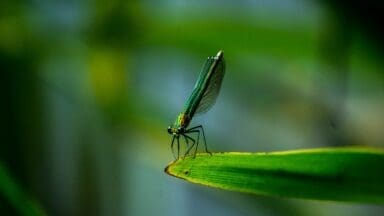
Between May and September London’s streams, rivers and ponds come alive with the darting flight of dragonflies and damselflies. Collectively known as odonata, these captivating predatory flying insects flourish in clean water bodies. Similar to butterflies, they serve as indicators of the health of ecosystems. However, to date, limited knowledge exists regarding their distribution across London.
The Wildlife Trust is therefore asking the assistance of London residents to become Dragonfly Detectives in the creation of a comprehensive map of their habitats within the city. Any observations of these dragonflies and damselflies in gardens, local parks, nature reserves, or any other suitable location are kindly requested to be added to the charity’s online database.
Some of Britain’s largest insects, dragonflies have a body length of up to 8.5cm and wingspans that can reach 12cm. They have a strong, purposeful flight, with some species capable of travelling up to 2km in search of smaller insects, which they catch in the air. Their skilful flight and predatory behaviour is reflected in some of their names: hawkers, chasers and skimmers.
Damselflies, on the other hand, are smaller than dragonflies, typically measuring between 3.5cm and 4.5cm in length. When resting, damselflies hold their wings closed and folded across their backs, unlike dragonflies, whose wings remain outstretched. Damselflies also exhibit a weak, fluttery flight pattern and tend to congregate near water bodies and bankside vegetation.

